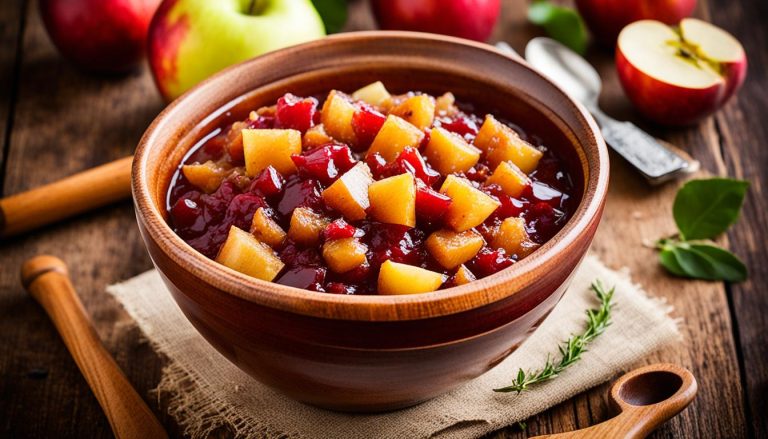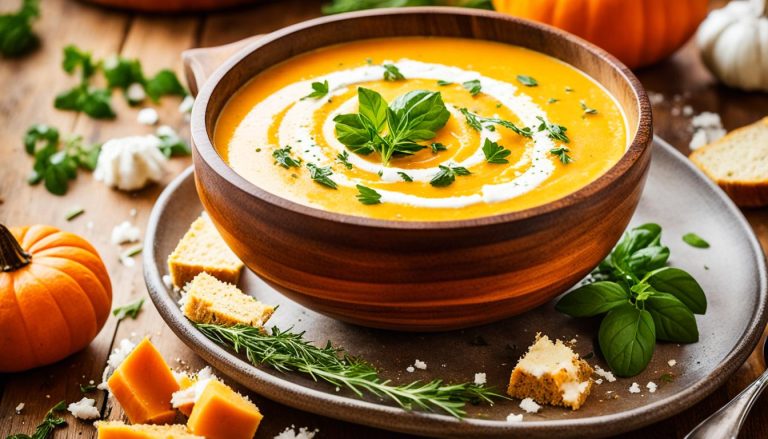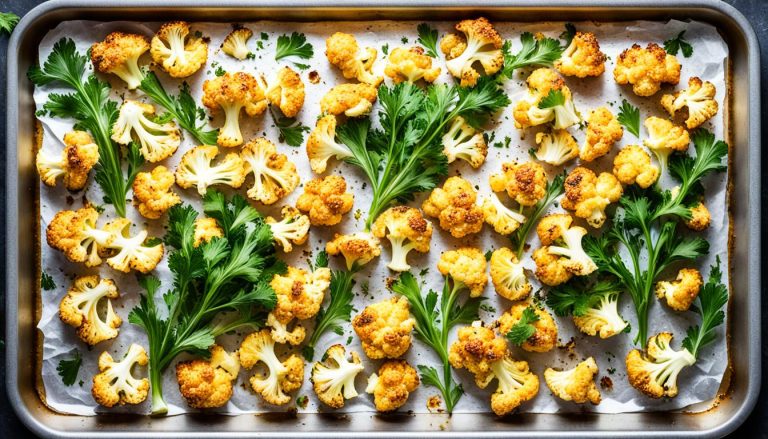Welcome to our homemade wholemeal bread recipe! If you’re looking for a simple and healthy option for your daily bread, you’ve come to the right place.
Our easy wholemeal bread recipe is perfect for those who prefer whole grain bread and want to try their hand at baking their own loaf. It requires no kneading and uses wholemeal flour for a nutritious and satisfying result.
Whether you’re a baking enthusiast or a beginner in the kitchen, this homemade wholemeal bread will surely impress your family and friends.
Not only is it delicious, but it’s also a great way to incorporate whole grains into your diet. With just a few simple ingredients and our step-by-step instructions, you’ll have a homemade loaf of wholemeal bread that rivals any store-bought option.
So, grab your apron and let’s get started on this easy wholemeal bread recipe. You’ll soon be enjoying the wonderful aroma of freshly baked bread filling your home, and savoring each slice of this wholesome and flavorful loaf.
Get ready to become a bread-baking pro with our homemade wholemeal bread recipe!
Wholemeal Bread Recipe
Wholemeal Bread Ingredients
The ingredients we need for this recipe are,
- 500 grams of wholemeal or whole wheat flour
- 2 tablespoon of instant yeast
- 1 ½ tablespoon of salt
- 1 tablespoon of honey or maple syrup
- 350ml of lukewarm water
Wholemeal Bread Instructions
Prepare the Ingredients: Before starting, ensure all your ingredients are at room temperature for optimal yeast activation and mixing. This includes the flour, yeast, salt, honey/maple syrup, and water.
Mixing the Dough:
When combining the dry ingredients in the large mixing bowl, ensure they are well incorporated before making a well in the center. This step allows for even distribution of the wet ingredients.
Gradually pour the honey or maple syrup mixture into the well while stirring continuously to form a sticky dough.
Kneading the Dough:
If kneading by hand, lightly flour your workspace before transferring the dough. Knead the dough for about 10 minutes, using the heel of your palm to push and fold the dough.
This process helps develop gluten and creates a smooth, elastic texture. If using a breadmaker, follow the specific instructions provided with your machine to mix and knead the dough accordingly.
Proofing the Dough:
Place the kneaded dough in a greased bowl, cover it with a damp kitchen towel, and let it rise in a warm, draft-free area. The dough should double in size after about an hour, but the time may vary depending on temperature and humidity.
Shaping and Proofing the Loaf:
After the first rise, gently punch down the dough to release air bubbles. Shape it into a loaf and place it in a greased or lined loaf tin.
Cover it again and allow it to rise for a second time until it reaches just above the rim of the tin. This step contributes to a light and airy texture in the final bread.
Baking the Bread:
Preheat your oven to the specified temperature. Once the dough has properly risen, bake it in the preheated oven for 30-35 minutes, or until the crust is golden brown and the bread sounds hollow when tapped on the bottom.
If using a breadmaker, select the appropriate baking cycle as per the machine’s instructions.
Cooling and Serving:
Remove the freshly baked bread from the oven and let it cool in the tin for a few minutes to set. Transfer it to a wire rack to cool completely before slicing. Enjoy the freshly baked bread with your favorite spreads or as part of a delicious meal.
By following these detailed steps and tips, you can create a beautifully crafted homemade bread that’s sure to impress your friends and family. Happy baking!
Step-by-Step Instructions
1. In a large mixing bowl, combine the flour, yeast, and salt. Make a well in the center.

2. In a separate bowl, mix the honey or maple syrup with the lukewarm water until dissolved.
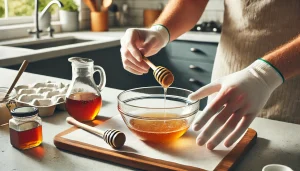
3. Pour the honey or maple syrup mixture into the well of the dry ingredients. Stir with a wooden spoon until a dough forms.
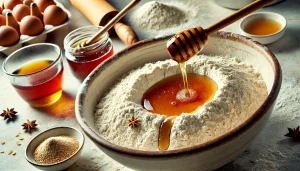
4. If kneading by hand, transfer the dough to a lightly floured surface and knead for about 10 minutes until smooth and elastic. If using a breadmaker, follow the manufacturer’s instructions for mixing and kneading the dough.
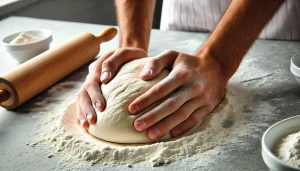
5. Place the dough in a greased bowl, cover with a clean kitchen towel, and let it rise in a warm place for about 1 hour or until doubled in size.
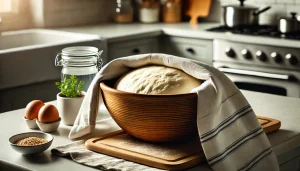
6. Preheat the oven to 200°C (180°C fan) or 400°F.
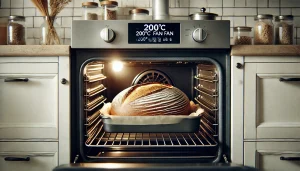
7. Once the dough has risen, punch it down to release any air bubbles. Shape it into a loaf and place it in a greased or lined loaf tin.
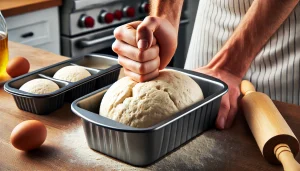
8. Cover the dough again and let it rise for another 30 minutes or until it has risen slightly above the rim of the tin.
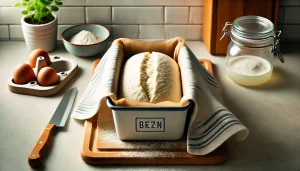
9. Bake the bread in the preheated oven for 30-35 minutes or until the crust is golden brown and the bread sounds hollow when tapped on the bottom. If using a breadmaker, select the appropriate baking cycle.

10. Remove the bread from the oven and let it cool in the tin for a few minutes before transferring it to a wire rack to cool completely.
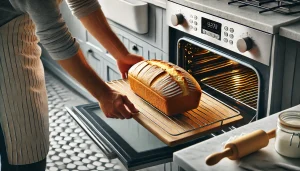
11. Slice and enjoy!
Why is this Easy Wholemeal Bread recipe so good?
This easy wholemeal bread recipe is a winner for several reasons, making it a must-try for all bread enthusiasts.
Not only does it result in a delicious and flavorful wholemeal loaf, but it also offers the convenience of minimal effort in the preparation process. Whether you’re a beginner or an experienced baker, this recipe is guaranteed to produce impressive results every time.
What sets this recipe apart is its unique no-knead method. Unlike traditional bread recipes that require hours of kneading, this easy wholemeal bread recipe eliminates the need for strenuous handwork.
Instead, the dough is left to ferment and develop its flavors slowly, resulting in a light and tender crumb. This time-saving technique allows you to enjoy freshly baked wholemeal bread without the long wait typically associated with homemade bread.
Another reason why this recipe is a favorite is its use of simple, readily available ingredients. It calls for just a handful of pantry staples, making it accessible to anyone who wants to try their hand at baking bread.
The combination of wholemeal flour, water, yeast, salt, and a touch of honey or sugar forms the basis of this recipe. You can also experiment with additional flavors such as herbs, spices, or seeds to customize your loaf according to your taste preferences.
By following this easy wholemeal bread recipe, you’ll be able to enjoy a versatile and nutritious loaf that can be used for all your favorite sandwich fillings, toast toppers, or simply enjoyed on its own.
The recipe’s simplicity and adaptability make it a go-to option for both beginners and seasoned bakers alike.
“This easy wholemeal bread recipe is a game changer! I love how it requires no kneading yet produces a delicious loaf every time. It’s become a staple in my household.” – Sarah, avid home baker
Customization Ideas
- Add a handful of mixed seeds (such as sunflower, pumpkin, or sesame seeds) to the dough for added texture and flavor.
- Sprinkle some oats or bran on top of the loaf before baking to create a rustic, wholesome appearance.
- Experiment with different herbs and spices, such as rosemary, thyme, or garlic, to infuse the bread with aromatic flavors.
- For a touch of sweetness, mix in some dried fruits like raisins or cranberries.
With its unparalleled ease of preparation, delightful taste, and endless customization options, it’s no wonder this easy wholemeal bread recipe holds a special place in the hearts of bread lovers everywhere. Give it a try and experience the joy of baking your own homemade wholemeal loaf.
Famous Chef’s Wholemeal Bread Recipe
Paul Hollywood Wholemeal Bread Recipe
Instructions:
- Mix Ingredients: In a large bowl, mix 500g of wholemeal bread flour, 10g of salt, and 7g of fast-action yeast. Add 40ml of olive oil and 320ml of water. Mix until a dough forms.
- Knead the Dough: Knead the dough on a lightly floured surface for 10-15 minutes until smooth and elastic.
- First Rise: Place the dough in a lightly oiled bowl, cover with cling film, and let it rise for about 1 hour, or until doubled in size.
- Shape the Dough: Knock back the dough (punch down), then shape it into a loaf and place it in a greased loaf tin.
- Second Rise: Cover the loaf tin with a tea towel and let the dough rise for another hour.
- Preheat the Oven: Preheat your oven to 220°C (200°C fan) or 425°F.
- Bake: Bake the bread in the preheated oven for 30-35 minutes, until the loaf sounds hollow when tapped on the bottom.
- Cool: Remove the loaf from the tin and let it cool on a wire rack.
Difference: Paul Hollywood’s recipe focuses on a traditional method with a long kneading time and includes olive oil for a slightly richer texture.
Mary Berry Wholemeal Bread Recipe
Instructions:
- Mix Ingredients: In a large bowl, combine 400g of wholemeal flour, 1 tsp of salt, 1 tsp of sugar, and 1 sachet (7g) of dried yeast. Stir in 300ml of warm water and 2 tbsp of sunflower oil to form a dough.
- Knead the Dough: Knead the dough on a lightly floured surface for about 10 minutes until smooth and elastic.
- First Rise: Place the dough in an oiled bowl, cover with cling film, and leave it to rise in a warm place for about 1 hour, or until doubled in size.
- Shape the Dough: Knock back the dough, shape it into a loaf, and place it in a greased loaf tin.
- Second Rise: Cover the loaf tin with a tea towel and let the dough rise for about 30 minutes.
- Preheat the Oven: Preheat your oven to 220°C (200°C fan) or 425°F.
- Bake: Bake the bread for 30-35 minutes, until golden brown and sounding hollow when tapped.
- Cool: Remove from the tin and let it cool on a wire rack.
Difference: Mary Berry’s recipe uses sunflower oil and includes sugar for a slightly sweeter taste, with a shorter second rise.
Allinson’s Wholemeal Bread Recipe
Instructions:
- Mix Ingredients: In a large bowl, mix 500g of wholemeal bread flour, 1 tsp of salt, 1 tsp of sugar, and 7g of Allinson’s Easy Bake Yeast. Add 300ml of warm water and 1 tbsp of vegetable oil.
- Knead the Dough: Knead the dough on a lightly floured surface for about 10 minutes until smooth and elastic.
- First Rise: Place the dough in an oiled bowl, cover with a damp cloth, and let it rise in a warm place for about 1 hour, or until doubled in size.
- Shape the Dough: Knock back the dough, shape it into a loaf, and place it in a greased loaf tin.
- Second Rise: Cover the loaf tin with a damp cloth and let the dough rise for about 30 minutes.
- Preheat the Oven: Preheat your oven to 220°C (200°C fan) or 425°F.
- Bake: Bake the bread for 30-35 minutes, until golden and hollow-sounding when tapped.
- Cool: Remove from the tin and cool on a wire rack.
Difference: Allinson’s recipe is straightforward, using their Easy Bake Yeast and vegetable oil, with an emphasis on simplicity and consistency.
Jamie Oliver Wholemeal Bread Recipe
Instructions:
- Mix Ingredients: In a large bowl, combine 500g of wholemeal flour, 1 tsp of salt, 1 sachet (7g) of dried yeast, and 1 tsp of honey. Add 300ml of warm water and 2 tbsp of olive oil.
- Knead the Dough: Knead the dough on a lightly floured surface for about 10 minutes until smooth and elastic.
- First Rise: Place the dough in an oiled bowl, cover with cling film, and let it rise for about 1 hour, or until doubled in size.
- Shape the Dough: Knock back the dough, shape it into a loaf, and place it in a greased loaf tin.
- Second Rise: Cover the loaf tin with a tea towel and let the dough rise for another 30-45 minutes.
- Preheat the Oven: Preheat your oven to 200°C (180°C fan) or 400°F.
- Bake: Bake the bread for 30-35 minutes, until golden brown and hollow when tapped.
- Cool: Remove from the tin and let it cool on a wire rack.
Difference: Jamie Oliver’s recipe includes honey for a hint of sweetness and uses olive oil for a slightly different texture, with a moderate baking temperature.
Is wholemeal flour the same as whole wheat?
Wholemeal flour and whole wheat flour refer to the same type of flour that is made from the entire grain of wheat, including the bran, germ, and endosperm.
In the United Kingdom, this type of flour is commonly referred to as wholemeal flour, while in other parts of the world, including the United States, it is known as whole wheat flour.
Regardless of the name, both wholemeal and whole wheat flour offer the same health benefits and can be used interchangeably in recipes.
If you are looking for a delicious wholemeal bread recipe that can be made in the UK, you’ve come to the right place.
This easy wholemeal bread recipe is perfect for homemade bread enthusiasts and can be made using wholemeal or whole wheat flour. Plus, if you have a breadmaker, you can adapt the recipe to make it even more convenient.
Benefits of using wholemeal flour or whole wheat flour
- Higher fiber content compared to refined flours
- Enhanced nutritional value due to the inclusion of the bran and germ
- Offers a nuttier flavor and denser texture
- Promotes better digestion and overall gut health
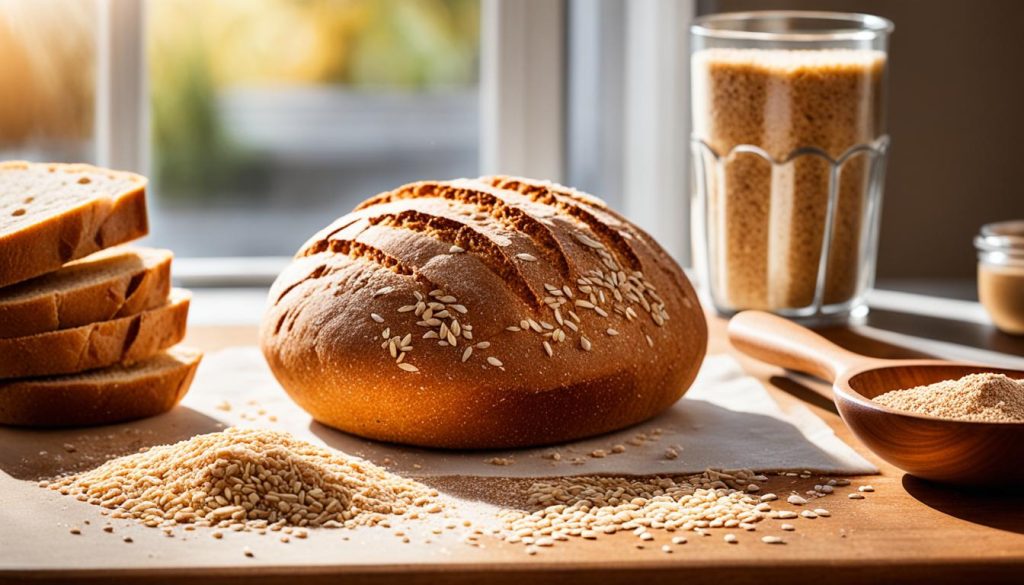
Now that you know the difference between wholemeal and whole wheat flour, it’s time to explore this easy wholemeal bread recipe. Whether you prefer to knead by hand or use a breadmaker, this recipe will yield a delicious and nutritious loaf of wholemeal bread.
“This wholemeal bread recipe is a staple in my household. I love how it combines simplicity and wholesome ingredients to create a tasty and satisfying loaf of bread. It’s perfect for sandwiches or toasted with a spread of butter. Give it a try!” – Sarah
How long does this bread last and can you freeze it?
This homemade wholemeal bread is best enjoyed freshly baked, but it can still be delicious for up to a few days after it’s made. If you find that you won’t finish the bread within that time, don’t worry! You can easily freeze it for later use, ensuring that none of it goes to waste.
Here’s how you can freeze your soft wholemeal bread:
- Slice the bread into individual portions. This will make it easier to defrost and use as needed.
- Place the slices in a freezer-safe bag or container. It’s a good idea to separate each slice with parchment or wax paper to prevent them from sticking together.
- Seal the bag or container tightly, ensuring that no air can enter.
- Label the bag or container with the date, so you can keep track of how long it has been in the freezer.
- Store the bread in the freezer for up to three months.
To defrost your frozen bread, there are a couple of options:
- Leave the slices on the kitchen counter for a few hours until they thaw completely.
- Toast the frozen slices directly in the toaster or under the grill. This will give the bread a slightly crisp texture while defrosting it at the same time.
Once the bread is defrosted, you can enjoy it as you would fresh bread. It’s perfect for toasting or making sandwiches, providing you with a convenient and tasty option whenever you need it.
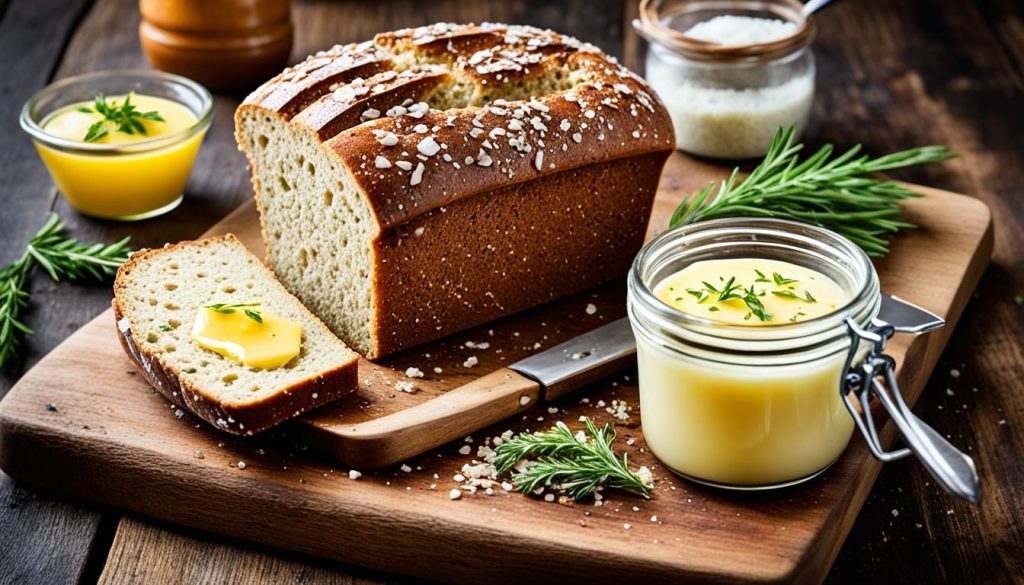
Freezing your homemade wholemeal bread is a great way to ensure its longevity and avoid waste. Follow these simple steps to enjoy your delicious and nutritious bread for an extended period. Whether you defrost it naturally or give it a quick toasting, the softness and flavor will remain intact.
Helpful tips to make your bread baking a success!
To ensure successful bread baking, follow these helpful tips:
Before adding the yeast to your wholemeal bread recipe, make sure to thoroughly mix the dry ingredients such as wholemeal flour, salt, and any other additional dry ingredients like seeds or nuts.
This will ensure that the yeast is evenly distributed throughout the dough, resulting in a well-risen loaf.
Use lukewarm water for activating the yeast:
When activating the yeast for your wholemeal bread recipe, it’s important to use lukewarm water (around 105-110°F or 40-43°C).
This temperature is ideal for activating the yeast and promoting fermentation. Water that is too hot can kill the yeast, while water that is too cold may not activate it properly.
Choose a warm and draft-free location for proving the dough:
After you’ve prepared the dough for your wholemeal bread, you’ll need to let it rise or prove. Find a warm and draft-free location in your kitchen, such as a turned-off oven or countertop away from windows or vents.
The warmth will help the yeast to activate and the dough to rise properly.
Cover the bowl with a clean kitchen towel or plastic shower cap for optimal rising:
When proving the dough for your wholemeal bread, cover the bowl with a clean kitchen towel or a plastic shower cap.
This will help to trap the heat and moisture, creating an ideal environment for the yeast to work its magic. It will also prevent the surface of the dough from drying out, ensuring a smooth and well-risen loaf.
You can also experiment with different ingredients and flavors to personalize your wholemeal bread.
Consider adding various seeds like pumpkin, sunflower, or sesame seeds for extra texture and flavor. You can also try using different types of flour, such as spelt or rye, to create unique variations of wholemeal bread.
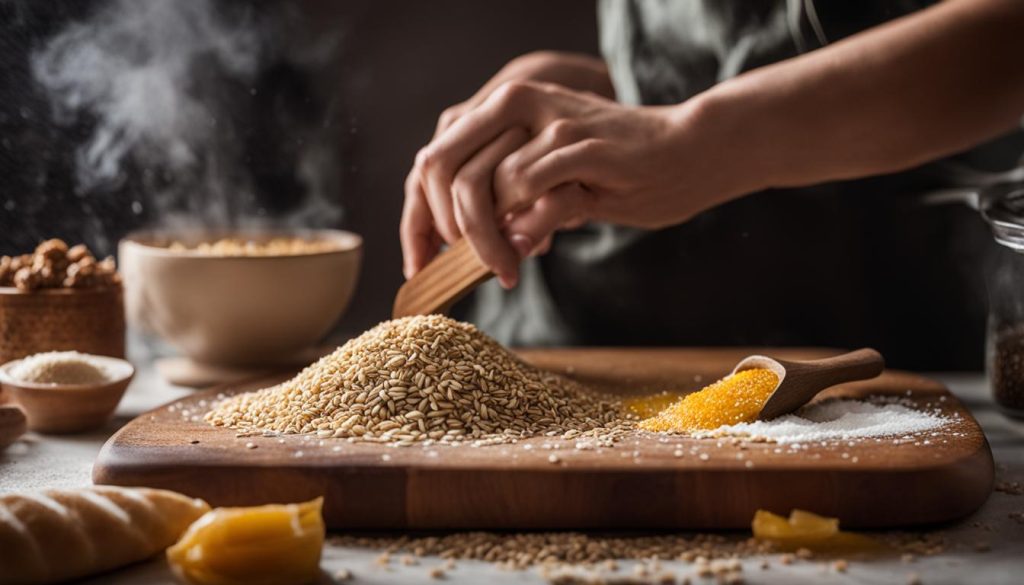
With these tips, you’ll be well-equipped to create delicious and successful wholemeal bread every time! Happy baking!
Conclusion
Creating your own homemade wholemeal bread is a fulfilling and satisfying experience that offers numerous health benefits.
This easy wholemeal bread recipe provides a simple yet effective method for baking your own bread at home, allowing you to enjoy a loaf that is not only delicious but also packed with nutritious whole grains.
By incorporating this recipe into your routine, you can take control of what goes into your bread, ensuring that it is free from any additives or preservatives. This healthy bread recipe allows you to prioritize your well-being without compromising on taste or convenience.
With its versatility, you can adapt the recipe to suit your preferences by adding various ingredients like seeds, herbs, or spices.
Whether you’re a beginner or an experienced baker, this whole wheat bread recipe guarantees a successful outcome every time, providing you with a soft, flavorful loaf that is perfect for sandwiches, toast, or snacking.
Incorporating wholemeal bread into your diet is a great way to increase your intake of dietary fiber, vitamins, and minerals.
The simplicity of this recipe makes it accessible to everyone, allowing you to enjoy the benefits of homemade bread without the need for complex techniques or expensive equipment.
So why not give it a try and embark on your journey to healthier eating with this simple wholemeal bread recipe?
FAQ
Is wholemeal flour the same as whole wheat?
Yes, wholemeal flour is essentially the same as whole wheat flour. It is more frequently referred to as wholemeal in the UK. This easy wholemeal bread recipe can be made using wholemeal or whole wheat flour, and it can also be adapted for use in a breadmaker.
How long does this bread last and can you freeze it?
This homemade wholemeal bread is best eaten on the day it is baked. However, it can be enjoyed for up to a few days after baking. If you don’t consume a lot of bread, you can easily freeze it for future use. Simply slice the bread and store it in a freezer-safe bag or container. To defrost, leave it on the kitchen counter or toast it from frozen until thawed.
What are some helpful tips for successful bread baking?
To ensure successful bread baking, mix the dry ingredients before adding the yeast, use lukewarm water for activating the yeast, choose a warm and draft-free location for proving the dough, and cover the bowl with a clean kitchen towel or plastic shower cap for optimal rising. You can also experiment with different ingredients and flavors, such as adding seeds or using different types of flour.
Are there any other wholemeal bread recipes available?
Yes, there are many other wholemeal bread recipes available. Some popular variations include wholemeal bread recipes by Paul Hollywood, Mary Berry, and Jamie Oliver.
You can also find wholemeal bread recipes on the BBC website. Additionally, there are recipes available for different types of healthy bread, such as whole wheat bread.
What makes this wholemeal bread recipe special?
This easy wholemeal bread recipe is special because it provides a simple and straightforward method for baking your own bread at home.
With its versatility and delicious taste, it is a great option for those looking to incorporate more whole grains into their diet. It is also a healthier alternative to store-bought bread, as it contains no artificial additives or preservatives.
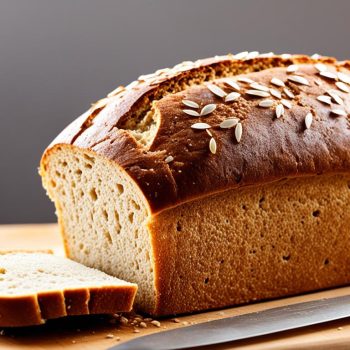
Wholemeal Bread Recipe
Ingredients
- 500 g wholemeal or whole wheat flour
- 2 tsp instant yeast
- 1 ½ tsp salt
- 1 tbsp honey or maple syrup
- 350 ml lukewarm water
Instructions
- In a large mixing bowl, combine the flour, yeast, and salt. Make a well in the center.500 g wholemeal or whole wheat flour, 2 tsp instant yeast, 1 ½ tsp salt
- In a separate bowl, mix the honey or maple syrup with the lukewarm water until dissolved.1 tbsp honey or maple syrup, 350 ml lukewarm water
- Pour the honey or maple syrup mixture into the well of the dry ingredients. Stir with a wooden spoon until a dough forms.
- If kneading by hand, transfer the dough to a lightly floured surface and knead for about 10 minutes until smooth and elastic. If using a breadmaker, follow the manufacturer's instructions for mixing and kneading the dough.
- Place the dough in a greased bowl, cover with a clean kitchen towel, and let it rise in a warm place for about 1 hour or until doubled in size.
- Preheat the oven to 200°C (180°C fan) or 400°F.
- Once the dough has risen, punch it down to release any air bubbles. Shape it into a loaf and place it in a greased or lined loaf tin.
- Cover the dough again and let it rise for another 30 minutes or until it has risen slightly above the rim of the tin.
- Bake the bread in the preheated oven for 30-35 minutes or until the crust is golden brown and the bread sounds hollow when tapped on the bottom. If using a breadmaker, select the appropriate baking cycle.
- Remove the bread from the oven and let it cool in the tin for a few minutes before transferring it to a wire rack to cool completely.
- Slice and enjoy!



